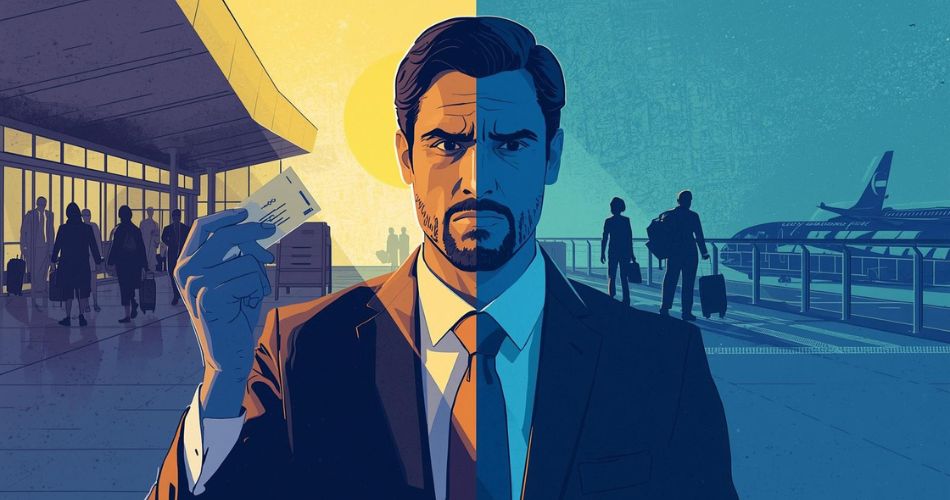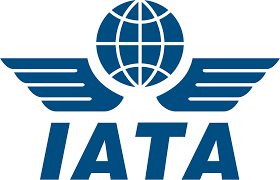Home > The Travel Industry’s Biggest Problem: Keeping Up with Airline Price Fluctuations
The Travel Industry’s Biggest Problem: Keeping Up with Airline Price Fluctuations

August 18, 2025 By Gargi Shukla
Introduction
The travel industry has always been dynamic — but in today’s digital-first era, one challenge overshadows the rest: airline price fluctuations.
Unlike hotels or tours, where rates often remain steady for days, airline fares can change dozens of times in a single day. A study by the U.S. Department of Transportation found that airfare can fluctuate up to 17 times in one day, depending on demand, seasonality, and airline strategy.
For travelers, this creates confusion. For travel agencies, OTAs, and DMCs, it means lost bookings, shrinking margins, and declining customer trust.
With the global online travel market projected to reach USD 988 billion by 2025 and more than USD 1.39 trillion by 2030 (Statista), agencies that fail to keep up with price changes risk being left behind in one of the world’s fastest-growing industries.
Why Do Airline Prices Fluctuate So Frequently?
Airline ticket pricing isn’t guesswork — it’s powered by sophisticated revenue management systems designed to maximize revenue. These systems track supply, demand, competition, and even traveler behavior in real time.
Here are the main drivers of price fluctuations:
- Demand & Seasonality
- During holiday seasons, long weekends, or major events (like the Olympics or music festivals), demand skyrockets. Airlines immediately increase fares to capture higher willingness-to-pay.
- Conversely, off-season fares may drop sharply to attract bookings.
- During holiday seasons, long weekends, or major events (like the Olympics or music festivals), demand skyrockets. Airlines immediately increase fares to capture higher willingness-to-pay.
- Time Before Departure
- The closer you are to departure, the higher the fare tends to be. Last-minute bookings often pay a premium.
- Airlines also use “fare buckets.” Once cheaper seats are sold, only higher-priced categories remain available.
- The closer you are to departure, the higher the fare tends to be. Last-minute bookings often pay a premium.
- Competitor Pricing
- Airlines continuously monitor competitors. If one airline drops its fare by $30, others often respond within minutes to stay competitive.
- Market Conditions & Events
- Global events, strikes, or geopolitical issues can change demand patterns overnight. For example, when borders reopened after COVID-19 restrictions, fares surged almost instantly.
- Customer Behavior
- Airlines track browsing history and search demand. A route with rising searches may trigger an algorithmic price increase.
- Multiple searches from the same location or device can sometimes push fares higher.
- Airlines track browsing history and search demand. A route with rising searches may trigger an algorithmic price increase.
- Seat Inventory & Cabin Class
- Each flight has limited seats in different “fare classes.” Once lower classes sell out, fares automatically jump to the next level.
- Each flight has limited seats in different “fare classes.” Once lower classes sell out, fares automatically jump to the next level.
📌 IATA sums it up best:

“Airlines use dynamic pricing to optimize revenue, which means the same seat may be sold at different prices at different times.”
For agencies, this creates a constantly moving target. A ticket quoted in the morning might be $450, only to rise to $520 by afternoon — or drop to $430 at night if competitors react.
The Ripple Effect on Travel Agencies
While dynamic pricing helps airlines maximize revenue, it creates serious challenges for travel agencies. The ripple effects can damage business operations, customer relationships, and profitability.
- Lost Bookings
- Customers abandon purchases when quoted fares suddenly rise. Even a $20–$30 increase can drive them to a competitor.
- This lost opportunity is especially painful for smaller agencies competing with large OTAs.
- Customers abandon purchases when quoted fares suddenly rise. Even a $20–$30 increase can drive them to a competitor.
- Customer Frustration & Mistrust
- Travelers expect consistency. When fares change after a quote, they often blame the agency — not the airline.
- This erodes trust, leads to negative reviews, and can push customers to book directly with airlines.
- Travelers expect consistency. When fares change after a quote, they often blame the agency — not the airline.
- Profit Margin Erosion
- To protect customer relationships, agencies sometimes absorb fare increases.
- Over time, these small losses add up, eating into profits and making business unsustainable.
- To protect customer relationships, agencies sometimes absorb fare increases.
- Operational Strain
- Staff spend countless hours monitoring fares manually across airline websites, GDSs, and consolidators.
- This reduces efficiency and shifts focus away from sales, marketing, and customer service.
- Staff spend countless hours monitoring fares manually across airline websites, GDSs, and consolidators.
- Competitive Disadvantage
- OTAs with advanced real-time pricing technology always have an edge over agencies with manual or delayed systems.
- Customers naturally prefer platforms that guarantee the lowest and most accurate fares at any given time.
- OTAs with advanced real-time pricing technology always have an edge over agencies with manual or delayed systems.
As Skift Research observes:

“Travelers are increasingly intolerant of outdated information — they expect real-time transparency.”
For agencies, this means inaccurate fares aren’t just an inconvenience — they’re a business killer.
How the Travel Industry Can Tackle the Challenge
To survive in today’s competitive market, travel agencies must shift from manual monitoring to technology-driven solutions. Here are the strategies leading agencies are adopting:
- Real-Time Price Monitoring
- Agencies need booking platforms that fetch live fares directly from GDS and NDC systems.
- This ensures customers always see the most accurate price.
- Agencies need booking platforms that fetch live fares directly from GDS and NDC systems.
- Instant Alerts & Notifications
- Price drops and increases happen in seconds. Alerts allow agents to act faster than competitors — locking in deals before fares rise.
- Automation
- Automated systems reduce human error and save hours of manual fare tracking.
- They also streamline quoting and booking, allowing agents to focus on customer experience.
- Automated systems reduce human error and save hours of manual fare tracking.
- Data-Driven Insights
- Agencies can use analytics to spot booking trends, forecast demand, and protect profit margins.
- For example, knowing which routes are more volatile helps agencies manage customer expectations.
- Agencies can use analytics to spot booking trends, forecast demand, and protect profit margins.
- Customer Transparency
- Providing live fare data builds trust. Customers appreciate honesty and are more likely to book quickly when they see real-time prices.
As Glenn Fogel, CEO of Booking Holdings, explained:

“The future of travel is all about technology, speed, and personalization.”
Agencies that embrace this mindset are better positioned to thrive in a volatile market.
FlyBlaze: Turning Fluctuations into Growth Opportunities
While price fluctuations are a problem for most agencies, they can be a growth opportunity with the right tools.
This is where FlyBlaze comes in.
FlyBlaze’s white-label travel portal solution empowers agencies, OTAs, and DMCs with:
- ⚡ Real-Time Airline Price Updates
- Ensure your customers always see the most accurate fares.
- No more losing deals to outdated quotes.
- 🔔 Instant Price Alerts
- Get notified the moment fares change, so you never miss an opportunity.
- Outpace competitors by reacting faster.
- 📊 Live Market Data & Analytics
- Gain insights into fare trends, demand patterns, and pricing behavior.
- Use this data to make smarter, profit-protecting decisions.
- 🌍 Your Own Branded Travel Portal
- Deliver a professional, real-time booking platform under your own brand.
- Build customer trust while expanding your business reach.
Instead of struggling against volatile pricing, FlyBlaze enables agencies to:
✅ Win more deals by offering the best fares at the right time.
✅ Retain customer trust with accurate, live information.
✅ Boost profitability by turning fare volatility into a strategic advantage.
With FlyBlaze, white label travel portal price fluctuations aren’t a threat — they’re a pathway to growth.
Conclusion
Airline price fluctuations are no longer a side issue — they are the single biggest challenge facing travel agencies today. With fares shifting multiple times a day, agencies that rely on outdated methods risk falling behind in an increasingly competitive marketplace.
But for those embracing real-time technology, what seems like a problem can become an opportunity to grow faster, retain customers, and improve profitability.
With FlyBlaze, agencies don’t just keep up with airline price fluctuations — they stay ahead of them.
👉 Ready to stop losing deals to sudden fare changes? Start transforming your travel business with FlyBlaze today.
This blog was compiled by FlyBlaze and takes sources from many places to make it objective and fair. If you find a mistake or a missing feature, please report it to gargi@cccinfotech.com and we will update this blog. Our goal is to have a continuously updated comparison of the main competitors to be as accurate as possible..
Featured Blogs
Stay Updated
Categories
Get the Latest Travel Tech Insights & Exclusive Offers
Discover how FlyBlaze is helping travel agencies, OTAs, and tour operators streamline their operations and boost profitability.
Frequently Asked Questions About Airline Price Fluctuations in the Travel Industry
Airline fares can rise or fall multiple times a day, leaving both travelers and agencies with plenty of questions. This FAQ covers everything you need to know.
